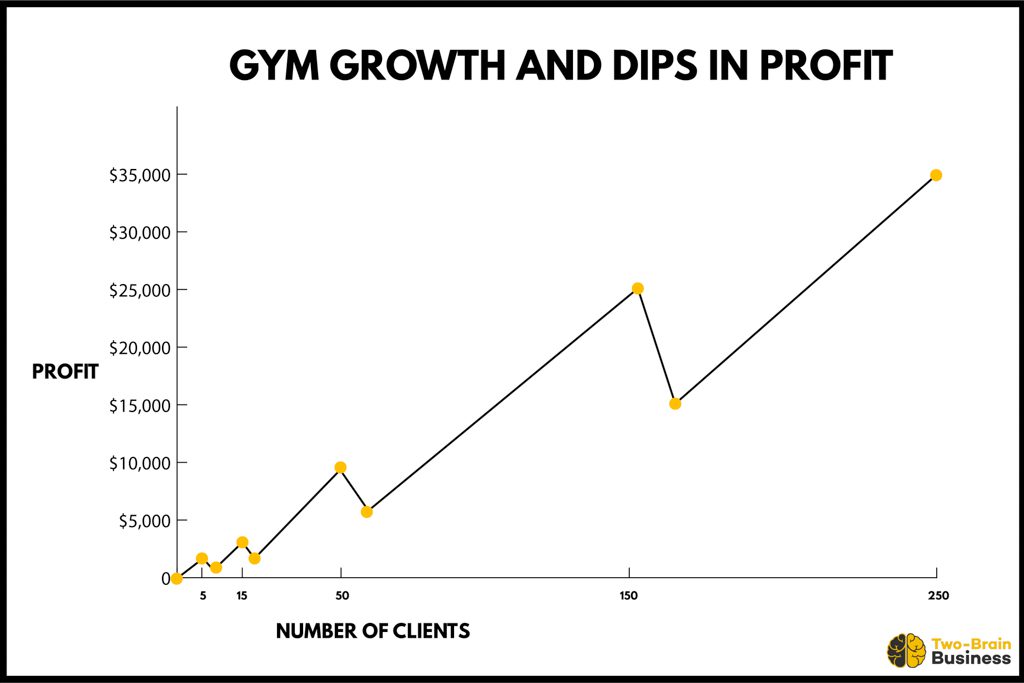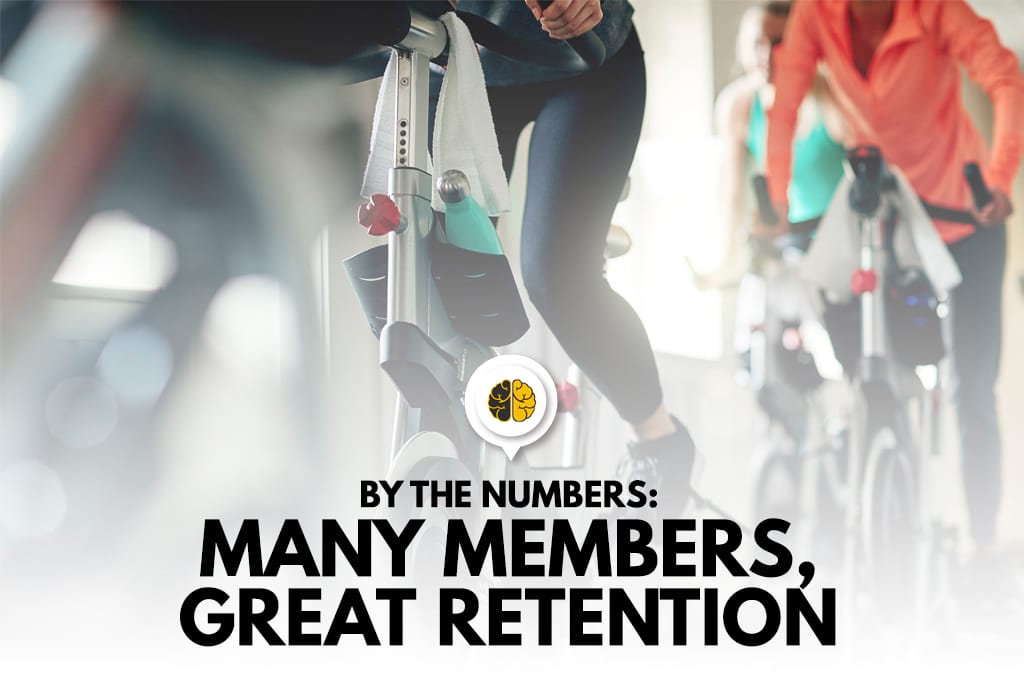“Every time our membership reaches 150 people, we drop back to 130!”
“We hover between 110 and 125 members. We never drop lower, but we never seem to reach higher, either.”
“We’ve been at the same membership for 2.5 years even though we get new people almost every month!”
Many gyms hit a “glass ceiling” and their growth just stops. Sure, they gain a few clients, but then they drop back again. They’ll have a little surge and then an exodus.
The reason? They’re using the wrong plan. Or they’re using a good plan at the wrong time.
In this series, I’ll tell you how your business has to change to blast through these glass ceilings, why you shouldn’t plan for 300 members right out of the gate and how the wrong growth plan is actually holding you back.

First: Why This Is Important
To change clients’ lives, you need to keep them in your care long enough to change their habits long term. For most people, that’s at least a year.
Retention of less than a year is also harmful to your business: The shorter the clients’ length of engagement, the sooner you’ll have to replace them. That means you’ll spend all your time thinking about marketing instead of changing the lives of the people already in your care.
Second: Why 150?
In our recent “State of the Industry” publication, we showed that the most successful gyms had an average of 152 clients. This has nothing to do with programming or equipment and little to do with local demographics. It has everything to do with human behavior.
Anthropologist Robin Dunbar’s work on human organization shows that we naturally congregate in groups of 5, 15, 50 or 150. After 150 people, groups usually split because we can’t effectively manage the network of connections anymore. This is why a company in the military is usually built around 150 people, why groups like the Hutterites split when their community reaches 150 and why many companies split their workforces into teams of 150 or fewer.
The number of clients you can effectively retain at your gym might not be 150. In fact, it’s probably less—you might find yourself reaching 100 members and then dropping to 90, or 120 members and dropping back to 110. But it’s very rarely more than 150.
Why You Can’t Bust Through Your Client Ceiling
Pop quiz: what’s a client’s partner’s name?
You can maintain a certain number of personal relationships really well. If you’re an empathetic extrovert, that number might be higher.
But if you’re running a business, the number gets lower all the time because your brain is just too full. Think about your shrinking circle of friends, your less-frequent calls to your mom, your last-minute shopping trips for the kids’ birthdays. When you have five clients, you remember their kids’ names, their dogs’ names and even where they went to college. But at 50, you won’t remember some of those details. And at 150, you probably won’t remember most of them.
It’s not critical to recall the names of pets. But this degree of knowledge is a sign of the strength of your relationship. If you know a pet’s name, you’re close. And for introverts (like me), the number of personal relationships I can maintain is probably a lot lower than 150.
Other things lower your client ceiling, too:
1. Lack of systems—If every client receives a different experience, you’ll lose many of them. Signal: Clients preferentially choose classes based on one coach over another.
2. Lack of proper onboarding—When a client is thrown into a group class—even for a “free trial” —the person is less likely to sign up and more likely to quit early. Signal: You don’t have a consultative process.
3. Poor retention—When clients leave, they sometimes take other clients with them.
4. Inconvenience—If your clients have to juggle their schedules to match yours, they’ll leave.
5. Staff turnover—Your best coaches leave and take clients with them.
6. The wrong model—At the 150-member mark, your model changes. You need different staff, different systems and maybe even a different name.
In the next post in this series, I’ll tell you exactly what the most successful gyms with more than 150 members have in common.
The Big Reason: Your Target Is too Far Away
Gyms that start small can scale a little at a time. The owners find a little space, fill it, get profitable and then grow.
Every time they grow, they experience a little “dip”: Their expenses are higher and their profit is lower. That’s normal for businesses that scale.
But if the “dip” is too big, it turns into the Valley of Death. And this is killing many microgyms: They open a 10,000 square foot facility with $50,000 in debt, and they’re instantly desperate to cover their monthly bills. So they offer discounts, try to force long-term contracts and just generally try to sell anything they possibly can to make money. Over time, as desperation increases, some might even run bait-and-switch ads on Facebook to survive.

You need a different plan at each stage of business.
Fewer than 50 clients? We want you to earn over $50,000 per year serving those clients. There’s a plan for that coming soon.
50-150? That’s our RampUp program. We want you to earn $100,000 per year with 150 clients.
Over 150? You need a different plan. That’s our Tinker program, where you’ll level up as a leader, learn to build a management layer, optimize for profit and duplicate your gym without killing yourself.
Other Media in This Series
“By the Numbers: What Gyms With More Than 150 Clients Have in Common”
“By the Numbers: Breaking the 150-Client Barrier”

